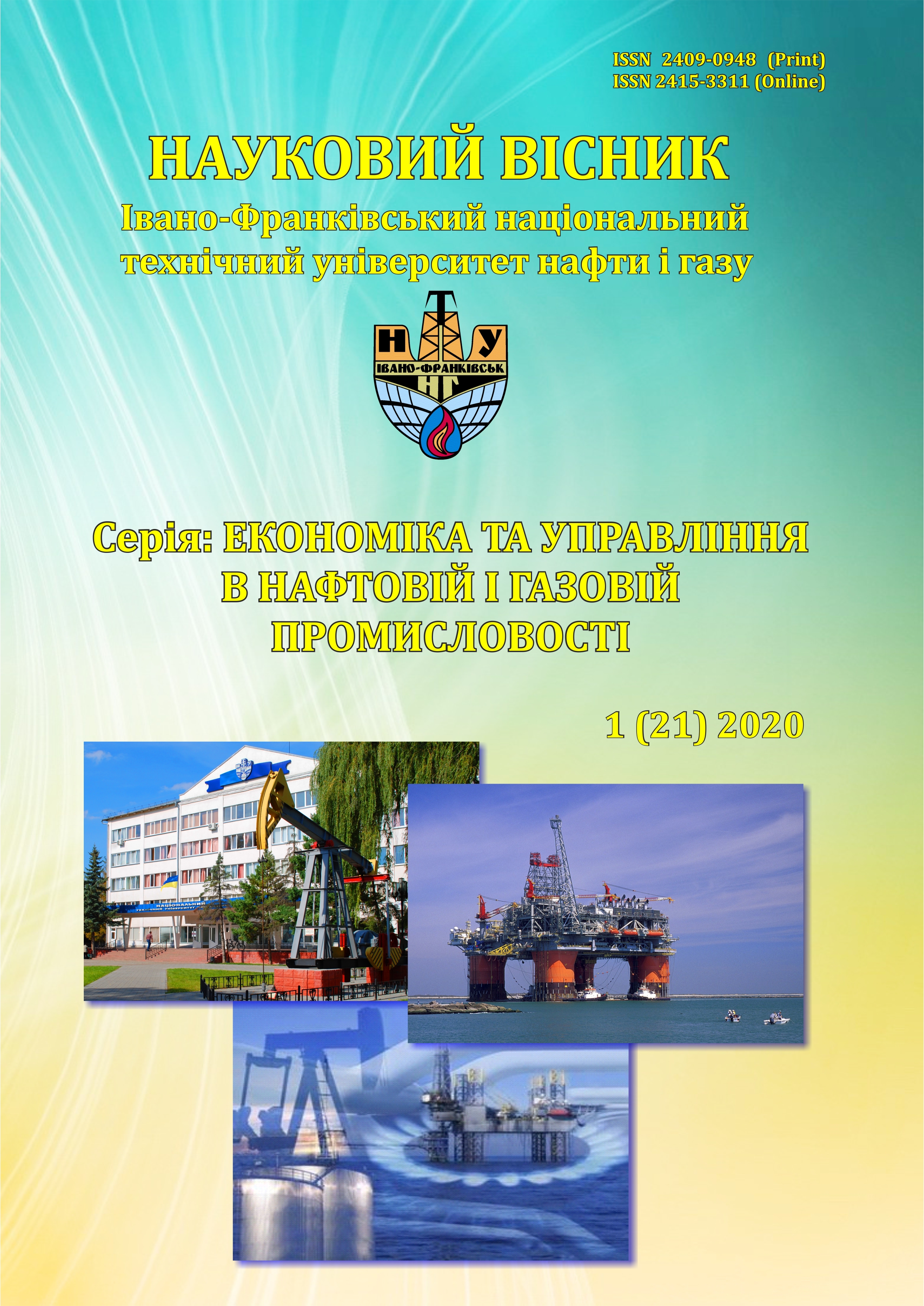STRATEGIC VECTORS OF DEVELOPMENT OF THE CUSTOMS SPACE OF UKRAINE IN THE GLOBAL ENVIRONMENT
DOI:
https://doi.org/10.31471/2409-0948-2020-1(21)-27-34Keywords:
duty space, duty environment, duty climate, international trade, activity of countries, efficiency of duty regulation, strategyAbstract
Goals. Systematization of strategic vectors of development of the customs space of Ukraine in the global environment and proposals development for its improvement.
Research methods. The theoretical and methodological basis of the research is the scientific works of domestic and foreign authors on the study of strategic vectors of development of the customs space of Ukraine in the global environment, Internet resources. In research were used general and special methods, in particular: economic, statistical and analytical methods for integrated analysis of development strategic vectors of customs in Ukraine; scientific and special research methods to achieve the goal; abstract-logical and dialectical methods of analysis for substantiating theoretical positions and conclusions. The article uses techniques for graphical display of results.
Results. A common formation vision of thenstrategic vectors for the development of the customs space of Ukraine in the global environment is considered and characterized. It is studied that the strategic vectors of the customs space formation should be based on institutional and organizational, innovative platforms, on foreign economic integration platforms and international cooperation, which in combination may help to reduce the risk of the customs space. It is proved that integration and globalization trends in the world economy require changes in the strategic vectors of development of the customs space of Ukraine in the global environment.
Scientific novelty. Strategic guidelines for the development of customs area of Ukraine in a global environment we consider, on the one hand, ensure the competitive position of national economy in the global market and the dynamic development of foreign trade, and national producers protection.
Practical significance. The obtained research results in the form of suggestions and recommendations can be used by our state during the formation of strategic vectors for the development of the customs space of Ukraine in the global environment.
References
VoytseshchukA. D. (2018). Mytnyy prostir Ukrayiny: hlobalni vyklyky ta ryzyky: monohrafiya. Ternopil, TNEU. 2018. 438 s. [in Ukrainian].
Sayt Derzhavnoyi sluzhby statystyky Ukrayiny. URL: http://www.ukrstat.gov.ua
Sydor H. V., Kulchytska S. M. (2019). Mytnyy prostir: suchasna interpretatsiya. Ekonomiko-upravlinski aspekty transformatsiyi ta innovatsiynoho rozvytku haluzevykh i rehionalnykh suspilnykh system v suchasnykh umovakh : mater. Vseukr. nauk.-prakt. internet-konf. (m. Ivano-Frankivsk, 11–12 kvit. 2019 r.). Ivano-Frankivsk, S. 264–266. [in Ukrainian].
Sydor H. V., Kulchytska S. M. (2019). Mytnyy prostir Ukrayiny v umovakh hlobalizatsiyi. Aktualni problemy sotsialno-ekonomichnykh system v umovakh transformatsiynoyi ekonomiky : zb. nauk. statey za mater. V Vseukr. nauk.-prakt. konf.
(m. Dnipro, 11–12 kvit. 2019 r.): u 2-kh ch. Dnipro: NMetAU, CH. 1. S. 106–108. URL: https://nmetau.edu.ua/ua/mdiv/i2015/p2685 [in Ukrainian].
StolinV. V. (1983). Samosoznaniye lichnosti. Moskva: Izdatelstvo Moskovskogo universiteta. [in Russian].
Ivashchuk I. O. (2009). Otsinka aktyvnosti krayin u mytnomu prostori ta yiyi vplyv na formuvannya mytnoho seredovyshcha. Naukovi zapysky Natsionalnoho universytetu «Ostrozkaakademiya». Seriya: Ekonomika. Vyp. 11. S. 40–57. [in Ukrainian].
Dovhal O.V., Andrusiv U.Ia., Tkalich O.V., Pavlenko O.S. (2019). Hlobalna ekonomika: navch. posib. Ivano-Frankivsk: FOP Cuprun V.P., 262 s. [in Ukrainian].
Andrusiv U. Ya., Sydor H. V.(2019). Mytne rehuliuvannia investytsiinykh protsesiv. Aktualni problemy suchasnoho biznesu: oblikovo-finansovyi ta upravlinskyi aspekty : mater.
I Mizhnar. nauk.-prakt. internet-konf., (m. Lviv, 19–21 berez. 2019 r.) : u 2-kh ch. Lviv, Ch 2.
S. 282–285. [in Ukrainian].
Downloads
Published
How to Cite
Issue
Section
License
Copyright and Licensing Terms
Copyright Statement
The authors who publish in the journal accept the following conditions:
- The authors retain the copyright and grant the journal the right of first publication, licensed with Creative CommonsCC BY-NC-SA , which permits other people to remix, transform, and build upon the material and use the material for non-commercial purposes, give appropriate credit and distribute the contributions under the same license as the original.
- The authors can conclude additional agreements on the non-exclusive distribution of the journal’s published version of the work (for example, publication of the work in electronic repositories) with an acknowledgment of its initial publication in this journal.
- The authors can upload the published articles on the Internet (for example, in electronic repositories or on web-sites), as it will stimulate fruitful scholarly discussions and increase the citation rates of the published articles.


1.png)


1.png)





